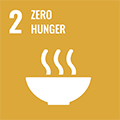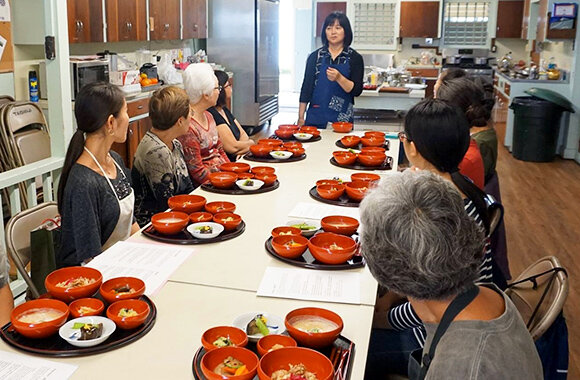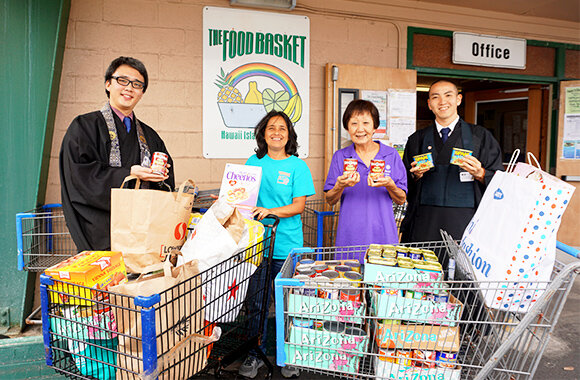Use of Cookies
Our website uses cookies to facilitate and improve your online experience.

"S, D, G, S?"
"What do you pronounce it?"
This is a reaction when one of the Bishop’s office members who participated in a meeting held in Japan was told that Soto-shu will work on the SDGs. At that time, SDGs (Sustainable Development Goals) were not widely known in Hawaii. But what I don't want you to misunderstand here is that people living in Hawaii aren't interested in sustainable development at all. On the contrary, it can be said that Hawaii, which is surrounded by the vast ocean and has a lot of nature, is committed to sustainable development more than any other region in the world. As evidence, Hawaii Government declared in 2014 that it would be the first in the United States to replace 100% of its electricity consumption with renewable energy by 2045. We are also taking the initiative in taking environmental measures, such as restrictions the use and sale of disposable plastic items. However, no matter how seriously Hawaiians are taking Sustainable Development, it does not mean that we remain indifferent to the SDGs. Because the aim of the SDGs are not only environmental issues, but also quality education, gender equality, economic development. And its scale is global. We cannot just look at the small unit of Hawaii.

The first thing we worked on was to educate Hawaii about what the SDGs are. Everyone knows that we should work on sustainable development, but as a Buddhist, we had to understand why we should work on the SDGs and how we would work on them. Fortunately, the SDGs are active on the mainland, and we were able to have some guest speakers.
One of teachers was Rev Konjin Godwin, Bishop of the Houston Zen Center. We could not have her in person due to the influence of the Covid-19. But she was willing to accept having a class on the Internet. Rev Konjin gave a lecture on SDGs after the meeting of the Hawaii Soto-shu general meeting. Her lecture really helped to get our understanding deepen and questions answered. She also talked that there are different approaches, models and tools for every region. I am sure her lecture has changed our attitude to the SDGs.
In this place, I would like to introduce the efforts of the Hawaii Soto-shu regarding zero hunger, which is the second goal of the SDGs.
Two-thirds of the people who are actually suffering from food shortages are from Asian countries. However, more than 800 million people are suffering from food shortage due to drought caused by climate change and changes in ecosystems around the world. It seems to us living in Japan and the United States that the problem of hunger is not directly related, but the problem of food is a global problem. On the other hand, in developed countries, one in eight adults is said to be obese. We also need to face to these inequalities.
In fact, 160,000 people in Hawaii are suffering from food shortages, of which 55,000 are said to be children. In addition, there are many homeless people in Hawaii. In other words, the food problem is not a problem of a distant country, but a problem that should be addressed first.
In fact, there are many organizations in Hawaii, such as the “Food Bank,” which distributes food to people suffering from food shortages.
When we hold big memorial services and events, we encourage temple members to bring the extra food to the temples. By donating the collected food to the “Food Bank” on a regular basis, we reach out our hands to the people who need those foods and contribute to the improvement of the food shortage problem.

Taking care of the problem of food shortages and distributing food directly is also an important attempt to achieve the goal of “zero hunger”. However, the Soto sect has a book “Tenzo kyokun” about meals written by Dogen Zenshi. In that book there is a mantra”Gokan no Ge” which express our appreciation to the meal in front of us.
People might just think that shōjin ryōri is "a dish that does not use meats". But this book says eating itself will be a part of Buddhist training and we have to appreciate all of life we take. Supporting people who are suffering from hunger directly is an effort to eliminate hunger, but I think that teaching the importance of eating to people who are not suffering from hunger is also a solution to the problem of poverty. We, Soto Mission in Hawaii, invite an instructor of shōjin ryōri to teach the members of the temples the importance of taking life through the experience of making shōjin ryōri. And we also serve shōjin ryōri to temple and Zazen groups. We believe these activities are one of the ways to solve the problem of hunger. I would like to continue to cooperate with the SDGs as a monk of the Soto sect. In Gassho.